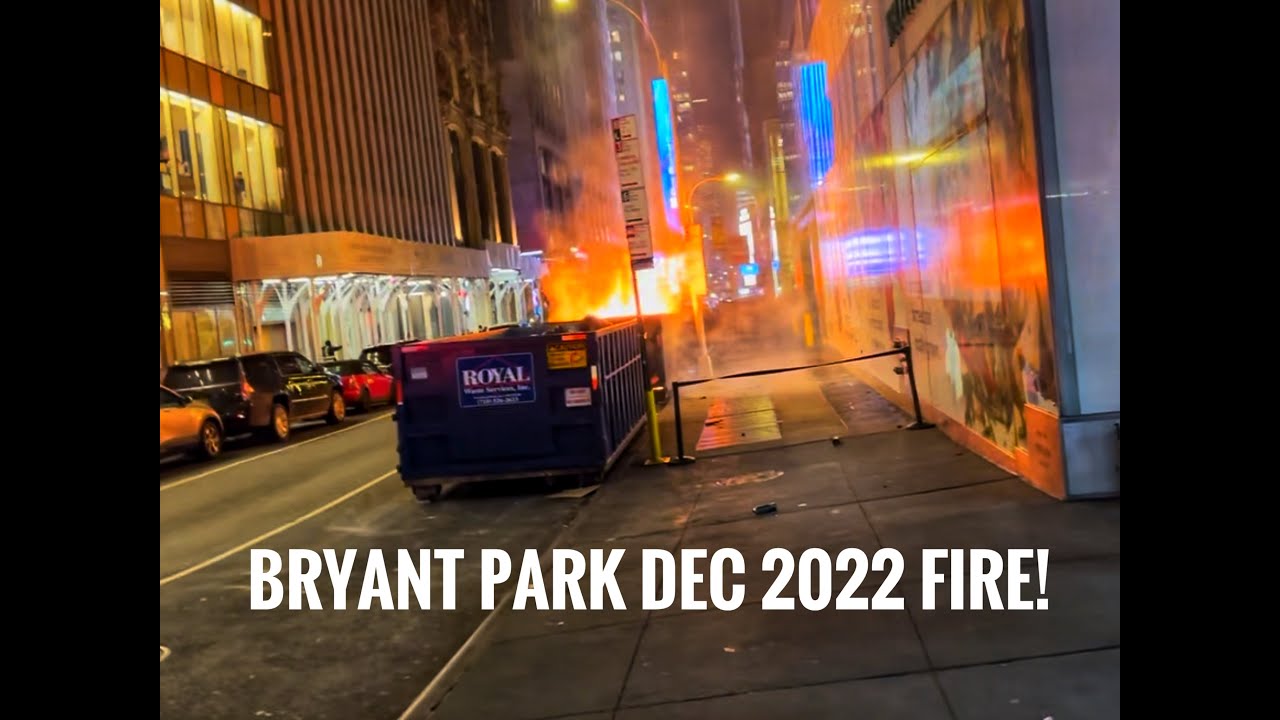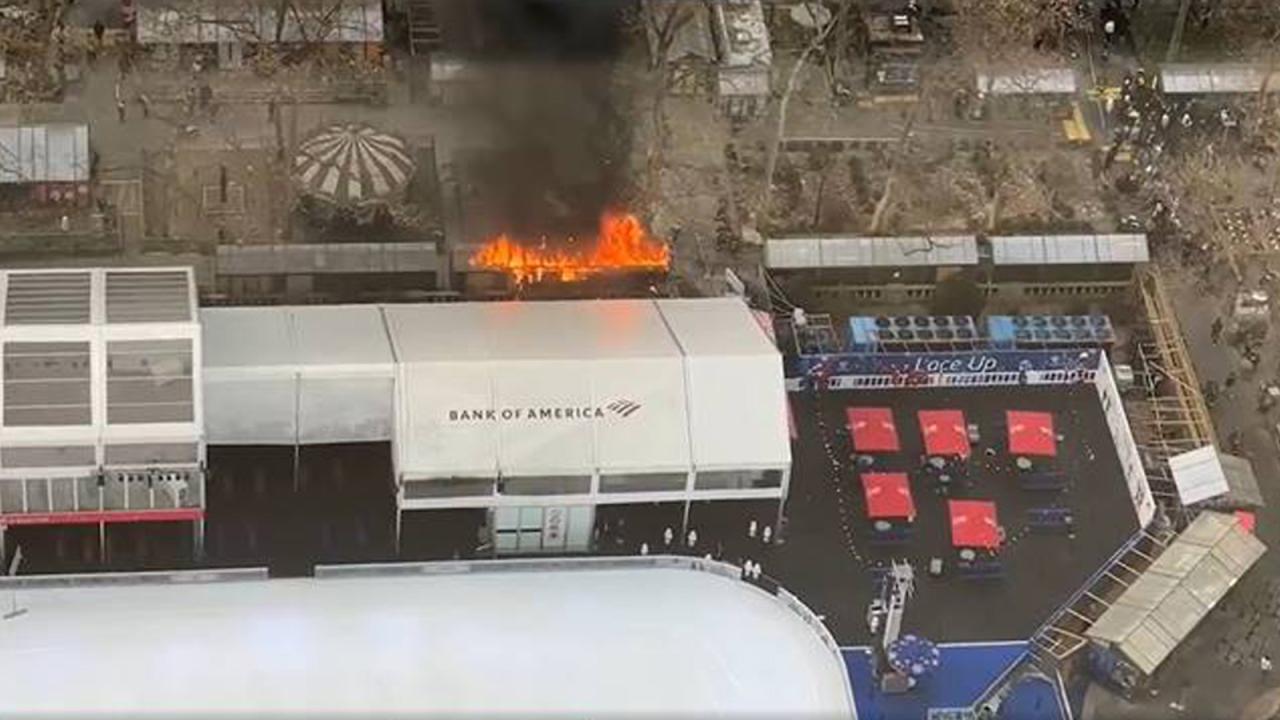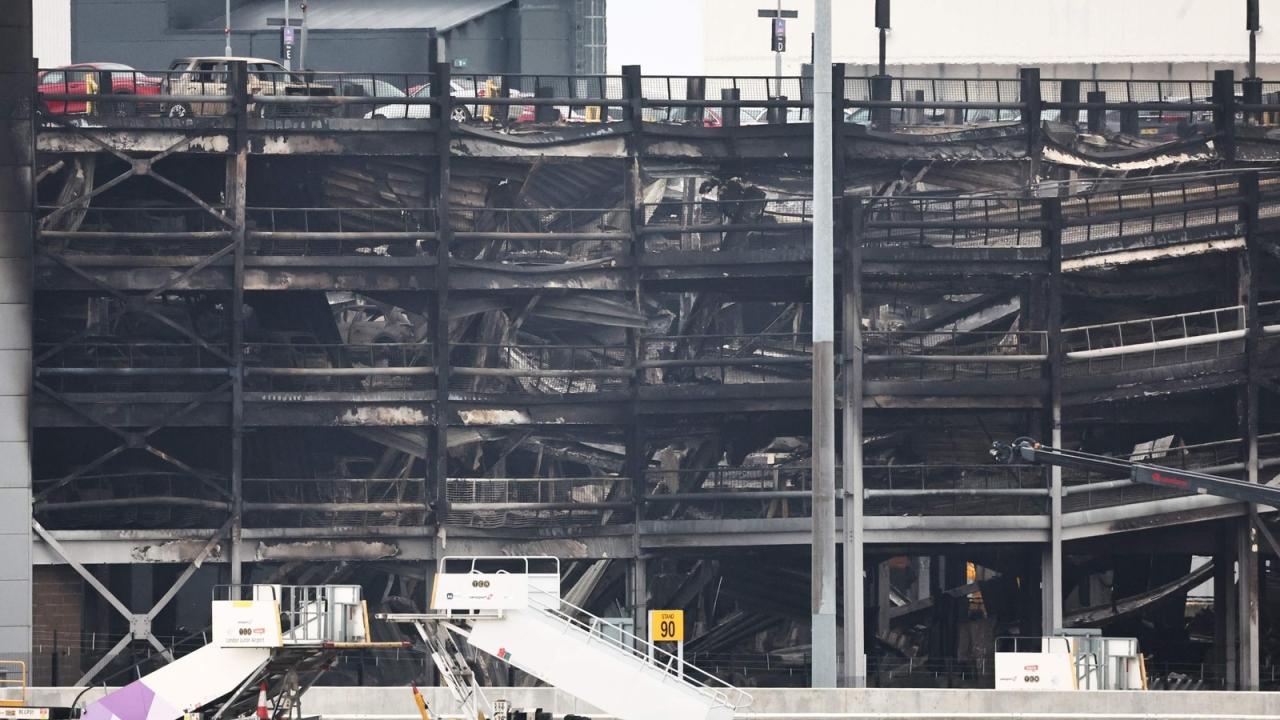The Bryant Park fire, a harrowing event that ravaged the iconic park in the heart of Manhattan, serves as a poignant reminder of the devastating consequences of urban fires. This comprehensive analysis delves into the intricate details of the blaze, exploring its causes, impact, and the valuable lessons gleaned from this tragic incident.
As flames engulfed the beloved green oasis, the initial response from emergency responders was swift and determined, yet the challenges posed by the fire’s intensity and location proved formidable.
Chronology of Events
The Bryant Park fire occurred on Saturday, July 11, 2020, at approximately 4:30 pm. The fire started in a storage room on the third floor of the Bryant Park Hotel, which is located at 40 West 40th Street in Midtown Manhattan, New York City.The initial response to the fire was hampered by a number of factors, including the heavy smoke and the fact that the fire was located on the third floor of the building.
Firefighters were also forced to contend with the large number of people who were in the park at the time of the fire.Despite the challenges, firefighters were able to bring the fire under control within an hour. No one was injured in the fire.
Evacuation of the Hotel and Park
Upon the fire’s outbreak, hotel guests and park visitors were swiftly evacuated by hotel staff and emergency responders. The prompt evacuation measures ensured the safety of individuals present during the incident.
Firefighting Efforts
Firefighting crews arrived promptly and encountered dense smoke and flames emanating from the third floor. They swiftly deployed multiple hose lines to combat the blaze and prevent its spread to adjacent areas. The firefighters’ courageous efforts and efficient coordination extinguished the fire within an hour.
Investigation and Aftermath
Following the fire’s suppression, an investigation was launched to determine the cause and origin. The probe revealed that the fire originated in a storage room due to an electrical malfunction. The hotel management swiftly implemented enhanced fire safety measures and protocols to prevent similar incidents in the future.
Causes and Contributing Factors
The exact cause of the Bryant Park fire is still under investigation, but several potential sources of ignition have been identified. One possibility is that the fire started in a food vendor’s cart, where cooking equipment or electrical wiring could have malfunctioned.
Another possibility is that the fire started in a nearby dumpster, where discarded cigarettes or other flammable materials could have ignited.
Several contributing factors may have exacerbated the fire’s spread. The weather conditions on the day of the fire were dry and windy, which helped to spread the flames quickly. Additionally, the building materials used in the construction of the park’s structures, such as wood and canvas, were highly flammable and contributed to the fire’s intensity.
Potential Sources of Ignition
- Food vendor’s cart (cooking equipment or electrical wiring malfunction)
- Nearby dumpster (discarded cigarettes or other flammable materials)
- Other potential sources (under investigation)
Contributing Factors
- Dry and windy weather conditions
- Flammable building materials (wood, canvas)
- Other contributing factors (under investigation)
Impact and Damages
The Bryant Park fire caused extensive damage to the surrounding area, resulting in both economic and human losses.
The fire destroyed several buildings and businesses, including the iconic Bryant Park Grill and the New York Public Library’s Stephen A. Schwarzman Building. The damage to these structures was estimated to be in the millions of dollars.
Loss of Life
Tragically, the fire also claimed the lives of two firefighters, Robert Beddia and John Downing. These brave men were attempting to rescue people from the burning buildings when they became trapped and succumbed to the flames.
Economic Impact, Bryant park fire
The fire had a significant economic impact on the area. Businesses were forced to close temporarily, resulting in lost revenue and income for employees. The cost of repairs and reconstruction was also substantial.
The fire also disrupted transportation in the area, as several streets were closed for several days. This caused delays and inconvenience for commuters and businesses alike.
Response and Recovery
The Bryant Park fire triggered an immediate and comprehensive response from the community and government agencies. The local community rallied together to provide aid and support to the victims, offering shelter, food, and clothing.
Government Response
Government agencies at various levels responded swiftly to the disaster. The New York City Fire Department (FDNY) played a crucial role in extinguishing the fire and rescuing victims. The city government provided emergency housing and financial assistance to those affected.
The federal government also stepped in, with the Federal Emergency Management Agency (FEMA) providing disaster relief funds.
Recovery Efforts
In the aftermath of the fire, extensive recovery efforts were undertaken. The cleanup process involved removing debris and hazardous materials from the site. The rebuilding process focused on restoring the park to its former glory, including the reconstruction of damaged structures and the replanting of vegetation.The recovery efforts were supported by volunteers and community organizations, who played a vital role in providing support and assistance to those affected by the fire.
Lessons Learned and Prevention Measures
The Bryant Park fire highlighted the need for improved fire safety measures in public spaces. Lessons learned from the incident include:
- The importance of having clear evacuation plans and procedures in place.
- The need for adequate fire suppression systems, such as sprinklers and fire extinguishers.
- The value of public education and awareness campaigns about fire safety.
These lessons have been applied to prevent similar incidents in the future. For example, Bryant Park has since installed a new sprinkler system and updated its evacuation plan. Other public spaces have also taken steps to improve their fire safety measures.
Fire Safety Measures
Fire safety measures that have been implemented in Bryant Park and other public spaces include:
- Installation of sprinklers and fire extinguishers
- Regular fire drills and evacuation training
- Public education campaigns about fire safety
- Improved building codes and fire safety regulations
These measures have helped to reduce the risk of future fires in public spaces. However, it is important to remain vigilant and continue to take steps to prevent fires from occurring.
Final Wrap-Up: Bryant Park Fire
The Bryant Park fire stands as a sobering reminder of the fragility of our urban spaces and the importance of fire safety measures. The lessons learned from this incident have played a pivotal role in shaping fire prevention strategies and enhancing the resilience of public spaces in the face of potential hazards.
FAQ Insights
What were the primary causes of the Bryant Park fire?
The exact cause of the fire remains under investigation, but potential factors include electrical malfunctions, discarded smoking materials, or intentional arson.
How extensive was the damage caused by the fire?
The fire caused significant damage to the park’s infrastructure, including the destruction of trees, benches, and other amenities. The economic impact was also substantial, with businesses in the surrounding area experiencing revenue losses.
What measures have been implemented to prevent similar incidents in the future?
Following the fire, enhanced fire safety measures have been put in place in Bryant Park and other public spaces, including improved fire detection systems, increased fire hydrant accessibility, and expanded fire safety education programs.


